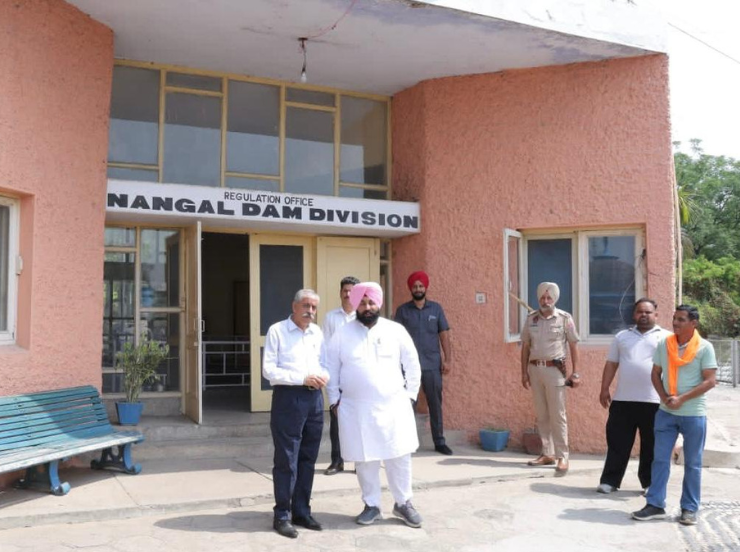
Chandigarh/Nangal, May 4 (NewsUp9): Punjab Cabinet Minister for Education and Information & Public Relations, S. Harjot Singh Bains, on Saturday visited Nangal Dam for the fourth consecutive day, intensifying the state’s vigil to ensure no excess water is released to Haryana, especially as the paddy sowing season nears.
Bains’ visit underlines the Punjab government’s firm stance on protecting farmers’ access to vital irrigation resources. Speaking after inspecting the dam, he stressed, “Water is the backbone of Punjab’s agriculture-driven economy. We will not let other states override Punjab’s rights, especially under pressure from the BJP-led Centre.”
The Minister revealed that Chief Minister Bhagwant Singh Mann had not only visited the Nangal Dam himself but also called a special session of the Punjab Vidhan Sabha on May 5 to deliberate and defend the state’s water rights.
“Our Aam Aadmi Party workers are guarding the dam vigilantly,” Bains said. “Farmers are preparing for paddy cultivation, and it’s our responsibility to ensure every drop is used for Punjab.”
He personally reviewed data regarding current water levels and release patterns, seeking assurance from officials that no unfair diversion is being made. Bains reassured the public that the state’s interests remain protected.
In addition to water rights, the Minister examined flood-preparedness plans, particularly in light of heavy monsoon rainfalls in Himachal Pradesh that often lead to flash floods in Punjab’s Swan Nadi region.
He criticized neighboring states for their double standards: “They refuse to take excess floodwater during emergencies, yet expect us to share our critical irrigation reserves.”
Highlighting achievements, Bains informed that the government had enabled irrigation for 10,000 additional acres this year through new initiatives. Future infrastructure upgrades include a lift irrigation project via pipelines aimed at benefiting the semi-hilly Changar area.
He confirmed that Punjab is actively strengthening weak dams and monitoring water bodies to mitigate flood threats during the upcoming monsoon.